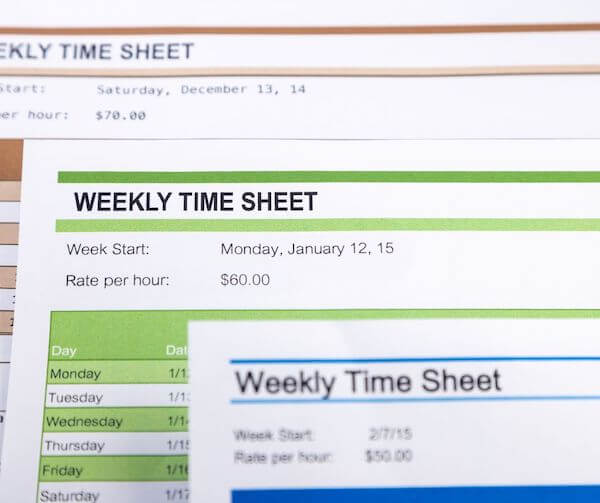If you have your own business, one of the smartest tax moves you can make is to hire your spouse to work as your employee.
Here are 5 things you should know, however, before adopting this strategy.
Pay Your Spouse Tax-Free Employee Benefits, Not Taxable Wages
If you put your spouse on the payroll and then pay him or her cash wages, you’ll get no tax savings. You’ll also be paying the federal and state taxes that go along with it, in addition to social security and Medicare taxes.

Rather than setting up your spouse’s wages in the above manner, you could pay your spouse entirely, or mostly, with tax-free employee fringe benefits.
The advantage of that means you won’t be dealing with payroll taxes, filing employment tax returns, or filing a W-2 for your spouse.

Tax-free employee fringe benefits include health insurance, which is not considered taxable income for your spouse-employee, yet it is a deductible expense for you as your spouse’s employer.
This results in real tax savings.
Establish a Medical Reimbursement Arrangement
Health benefits are normally the largest tax-free employee fringe benefit that you can provide your spouse.
By adopting this plan, you can convert health insurance premiums and other medical expenses for your spouse, yourself, and your children under the age of 27 into fully deductible business expenses.

Deducting these health expenses as a business deduction reduces your taxable income not only for income taxes, but for social security and Medicare taxes as well.
If your spouse is the only employee of your business, you should establish a spousal health reimbursement arrangement, which is known as a 105-HRA.
This is the best possible way to pay for health expenses as a business owner, with a spouse as your sole employee.
Below is an example of how it could work.
Your spouse purchases his or her own health insurance plan in his or her name to cover the entire family (including you). You, as the employer, reimburses your spouse for the premiums.
You also reimburse your spouse for health expenses not covered by insurance, including deductibles, copays, and prescriptions, for your entire family. You can reimburse your spouse for virtually all deductible medical expenses.

The IRS imposes no limit on the amount you can reimburse a spouse-employee with a 105-HRA. But the total amount should be reasonable for the work your spouse performs.
The entire cost of this family plan is a tax-free employee fringe benefit for your spouse. Meanwhile, you (the employer) get to deduct the full amount as an ordinary business expense for an employee benefit program.
This arrangement works for the following business set-ups:
- A sole proprietorship reporting on Schedule C of IRS Form 1040;
- A partnership filing IRS Form 1065;
- An LLC taxed as a sole proprietorship or partnership;
- A real estate rental business reporting on Schedule E of Form 1040; or
- A farm business reporting on Schedule F of Form 1040.
The reimbursements are tax-free to the employees and tax-deductible for you, the employer.
Take Advantage of Certain Other Fringe Benefits
There are additional tax-free employee fringe benefits that you can provide to your spouse. They include the following:
Education

You can provide job-related education opportunities for your spouse-employee that are deductible by you and not considered income to your spouse/employee.
Life insurance
You can provide your spouse-employee with up to $50,000 in group term life insurance coverage tax-free.
Working Condition Fringe Benefits
You can deduct for expenses-related items that help your spouse do his or her job. For example, you can deduct the entire cost of a smartphone that your spouse uses for business purposes.

In addition, your spouse doesn’t have to use the phone solely for business purposes or keep records of the business use of the smartphone.
De Minimis Fringe Benefits
Certain types of relatively low-cost occasional employee benefits are tax-free and deductible by the employer. These include occasional meals and snacks, gifts (such as a small birthday gift), sporting event or theater tickets, and flowers or fruit for special occasions.
Be Aware of Certain Tax-Free Benefits
Section 127 Education Plan
While we mentioned an education benefit above, be aware that the law prohibits Section 127 benefits to your spouse and dependents under the 5 percent ownership test.
Transportation Benefits
If you and your spouse work in an outside office, you can provide him or her tax-free transportation benefits just as you would for any other employee.

However, because of the Tax Cuts and Jobs Act, the tax-free transportation benefits to your employees are not deductible by you, the employer, and because we are talking about your spouse as an employee, the transportation fringe benefit gives no net benefit to you and your spouse.
Make Sure Your Spouse Is Indeed Your Bona Fide Employee
The IRS usually targets spouse-employee deductions like health insurance and other expenses by claiming that the spouse is not actually a bona fide employee.

Your spouse won’t magically become an employee because he or she signs an employment agreement saying he or she is one. Indeed, a written agreement can backfire if you and your spouse don’t live up to its terms. You’re usually better off without one.
Instead, you need to be able to prove the following:
- That your spouse is not the co-owner of your business. Spouses who co-own a business are engaged in a partnership, not an employer-employee relationship. Your spouse should not share a title in any business assets. You should have a separate business bank account under your sole control. And all contracts and government filings should be in your name alone
- That your spouse does real work. Your spouse must perform real work for your business, whether full- or part-time. The services don’t have to be indispensable—only those that are common, accepted, helpful, and appropriate for your business.

Photo: Vinnstock, Getty Images. - That you keep track of the work your spouse performs and the related hours by having him or her fill out weekly time sheets. The time sheet should list the date, the services performed, and the time spent performing the services. The time sheet is the key to proving your spouse is a real employee.
- That your spouse gets paid by you as his or her employer. Your spouse should pay all medical and other reimbursable expenses from his or her separate checking account and then submit a claim for reimbursement—ideally, each month. You then pay the reimbursement from your business account, and your spouse deposits those monies into his or her checking account.
- That your spouse works under your direction and control. The IRS uses the common-law “right of control” test to determine whether your spouse, or any other worker, is your employee. You should make the management decisions, and your spouse should work under your direction and control.
- That your spouse’s compensation is reasonable. Your spouse’s compensation (which, to achieve tax savings, will be primarily from fringe benefits) must be reasonable to be deductible.
There is a strong temptation to overpay your spouse when he or she is your employee because the payments are deductible.

Resist the temptation and pay no more than what similar workers earn for similar work. Document what similar workers earn by doing a simple online search that will reveal many sources of salary information.
- Comply with state requirements for employers. Depending on your state, you may need to register as an employer and provide your spouse with workers’ compensation coverage even if he or she is your only employee. In a few states, you may also have to withhold and pay premiums for state disability or family and medical leave programs.
The Benefits in a Nutshell
Hiring your spouse can result in substantial tax savings, but only if you pay your spouse solely, or mainly, with tax-free employee fringe benefits instead of taxable wages.
The most valuable fringe benefit you can provide your spouse-employee is reimbursement for health insurance and uninsured medical expenses.

You can accomplish this through a 105-HRA plan, mentioned above, if your spouse is your sole employee, or through an ICHRA (Individual Coverage Health Reimbursement Arrangement) if you have multiple employees and don’t operate as an S corporation.
Tax-free employee fringe benefits are not limited to health benefits. As mentioned above, you can provide certain education, life insurance, and working condition-related fringe benefits.
For your spouse-employee deductions to withstand being targeted by the IRS, you must be able to show that your spouse is a bona fide employee.
Let us know if you employ your spouse or if you are thinking of doing so. If you need further guidance on this, be sure to reach out to us by calling 914-237-3232 or by emailing [email protected].
Read More: Helping Our Clients Streamline Payroll, Benefits and More




